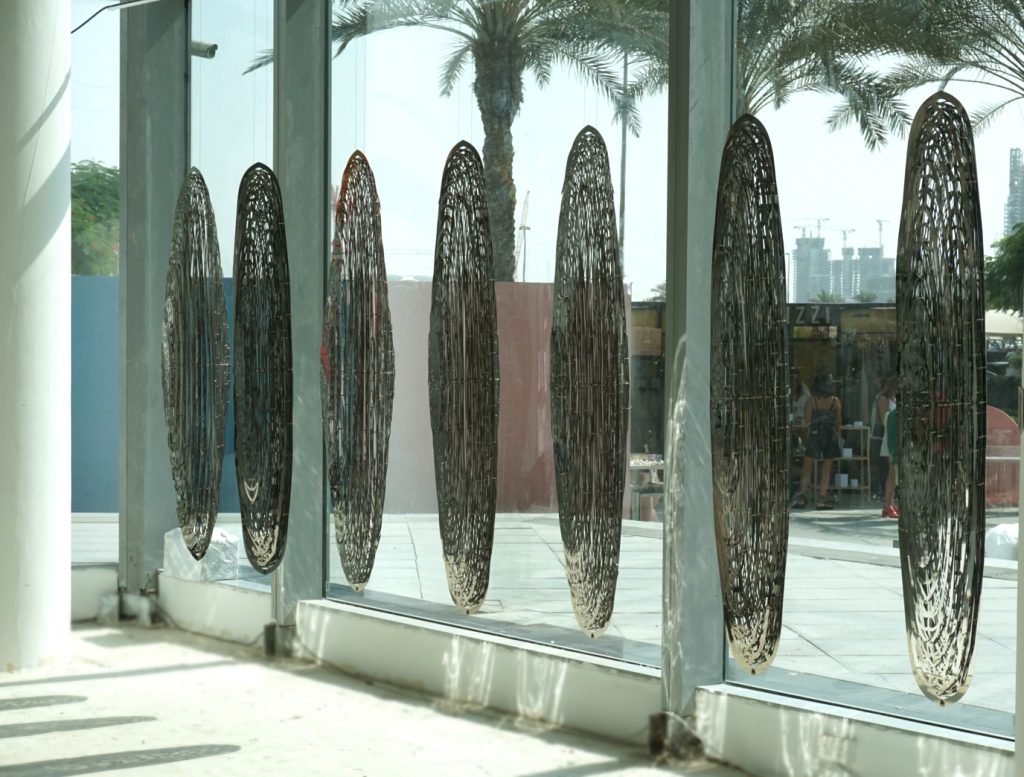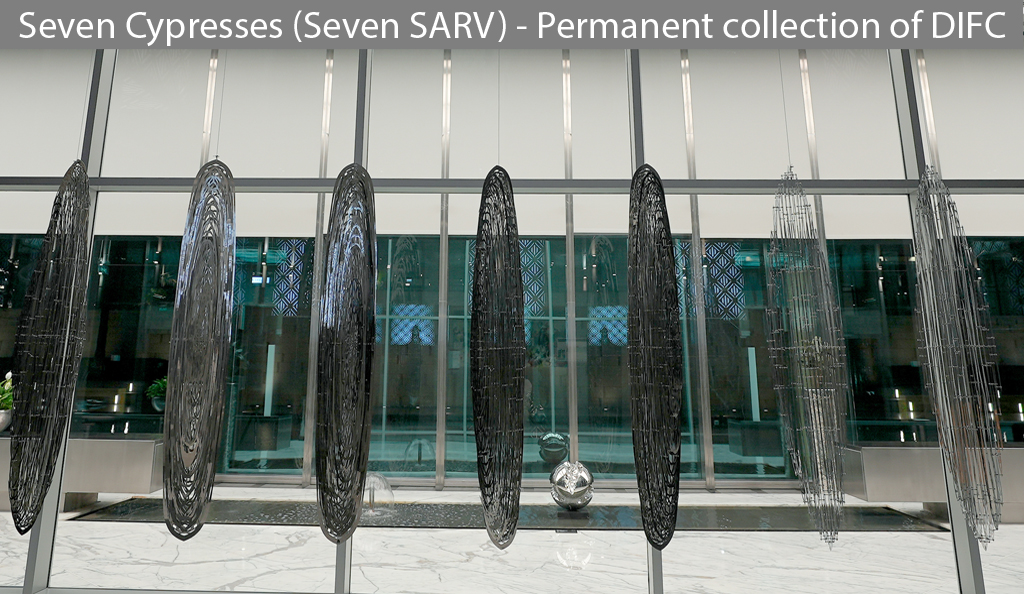Seven Cypresses
sculpture
This installation is derived from the cut trunks of trees that are displayed in the interior by changing the context. They are suspended and have no support from the ground. In traditional symbolism, the tree is interpreted as a supporting pillar between the earth and the sky and establishes a balance between the earth and the sky, but in this installation, it is shown that this stable balance between the earth and the sky is no longer established and suspended trunks refer to the disappearance of this established system. The numbers projected on the works of this installation refer to the acceleration of environmental destruction in the contemporary world, for instance, the number of trees cut down every minute or the amount of greenhouse gas emissions every hour, etc. In the body of each of the plastic shapes of this installation, I have deliberately used the combination of Gothic and Islamic geometry to point to the traditional cosmology and its special perception, and also in this installation, like my other works in the field of design, I have appropriated these motifs. In this installation, I tried to create a new form by combining Gothic geometry and Islamic geometry, and I intended to point out a common component in the art of the East and the West. This geometry refers to none of those two traditions alone, but is a combination of both.
The use of these two traditions is due to their universality and reference to tradition. In traditional thinking, we do not face environmental crises, because nature has a sacred and symbolic meaning. While in contemporary thinking, environmental crises are one of the most basic concerns of contemporary man. In contemporary thinking, nature has lost its symbolic meaning and has become a consumer object. Transferring Islamic geometry and bringing it closer to Gothic geometry in this installation has a memorial aspect. These memorial motifs refer to the symbolic perception of traditional systems regarding nature.
The geometry of Islamic art motifs and Gothic motifs, in spite of many commonalities, have a distinct feature that emerged from the cosmological system of these two arts: they both emphasize a hierarchical system. Such a system is one of the components of traditional arts and reveals itself in the traditional perception of geometry. In such an attitude, geometry serves the principle of transcendence and an exclusivist interpretation of truth, which does not give life to the plurality of truth. The symbolism, composition, and perspective of the arts that use such geometry are indicative of such an attitude. Such a connection between geometry and truth has given geometry a sacred role in the traditional worldview.
Such a view of geometry is completely incompatible with the contemporary view. According to contemporary philosophy, we are faced with a plurality of truths. What we have learned about the truth in the traditional view, reveals itself in various forms, which has made it impossible to obtain a whole of it. Every form of truth is dependent on the human perspective, which is not very stable, and in every change, it loses its previous order and finds a new formulation. In this view, instead of the arduous and unchanging truth of classical philosophies, we are faced with expressions and perspectives, each of which is a human’s interpretation of the subject of his progress.
It is not without reason that geometry also finds a different role in the contemporary encounter with it, and the sanctity of geometry in traditional arts gives its place to the geometry that was formed in the secularization process of the modern era. This geometry is a reflection of secular ideas, which is a clear criticism of the traditional worldview of geometry.
This installation is also a continuation of the project of interpretation and appropriation of geometry. This collection looks at the geometry in Islamic and Gothic art. Gothic, like Islamic art, is an art based on traditional theology and cosmology, and making it contemporary means a fundamental change in the perception of this art from the truth. In this collection of plastic shapes, there is a single shape, and the change in this single shape has led to the discovery of multiple shapes. From every angle we look at them, a new aspect reveals itself, and we face a different aspect.
* Below are pictures, videos, and maps. Two locating alternatives are also provided. Due to the location-oriented nature of the work, this installation may be repositioned according to the proposed space, and even the dimensions and number of proposed works may change according to the presentation location.
Banafsheh Hemmati



website design by: hasti yekan